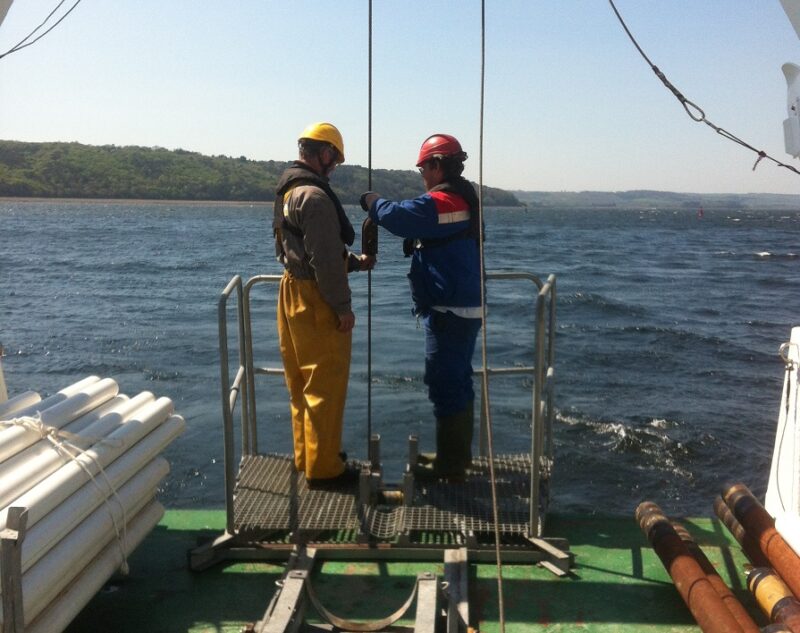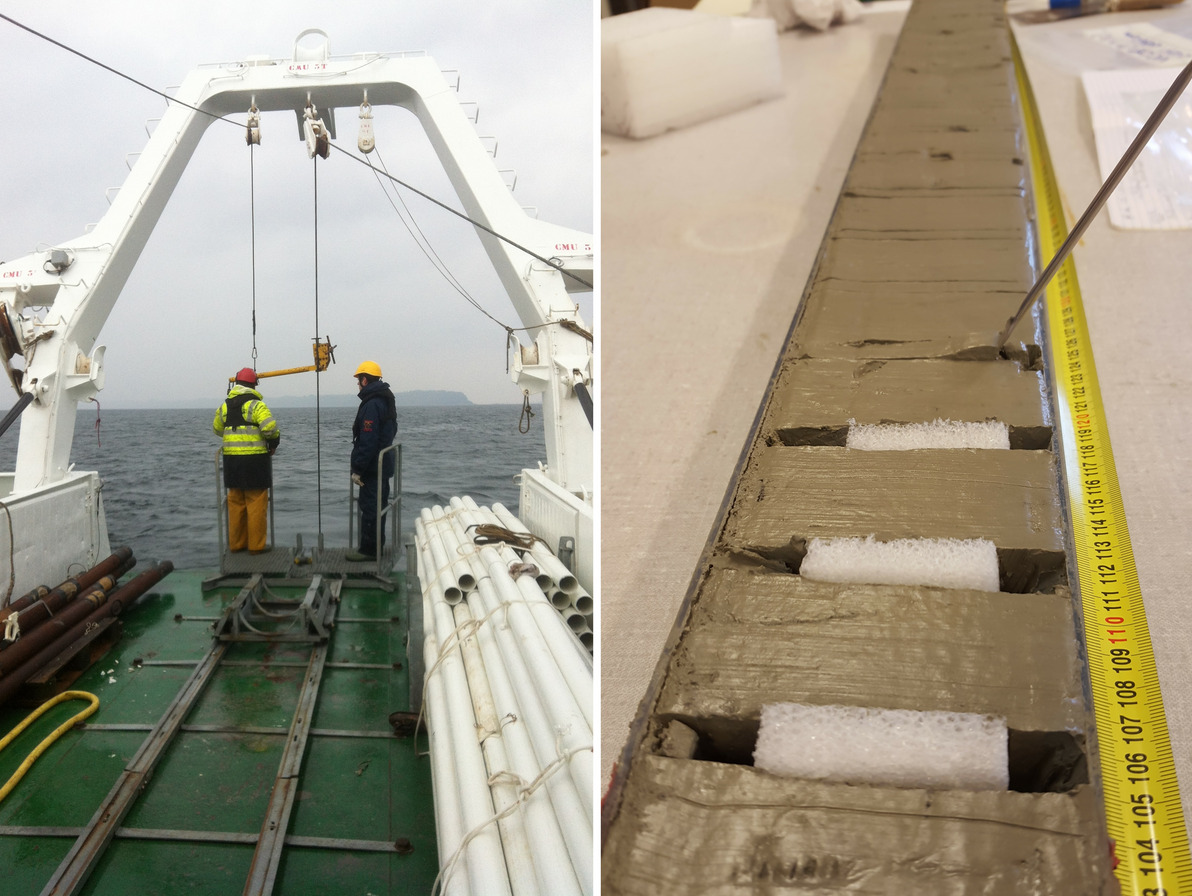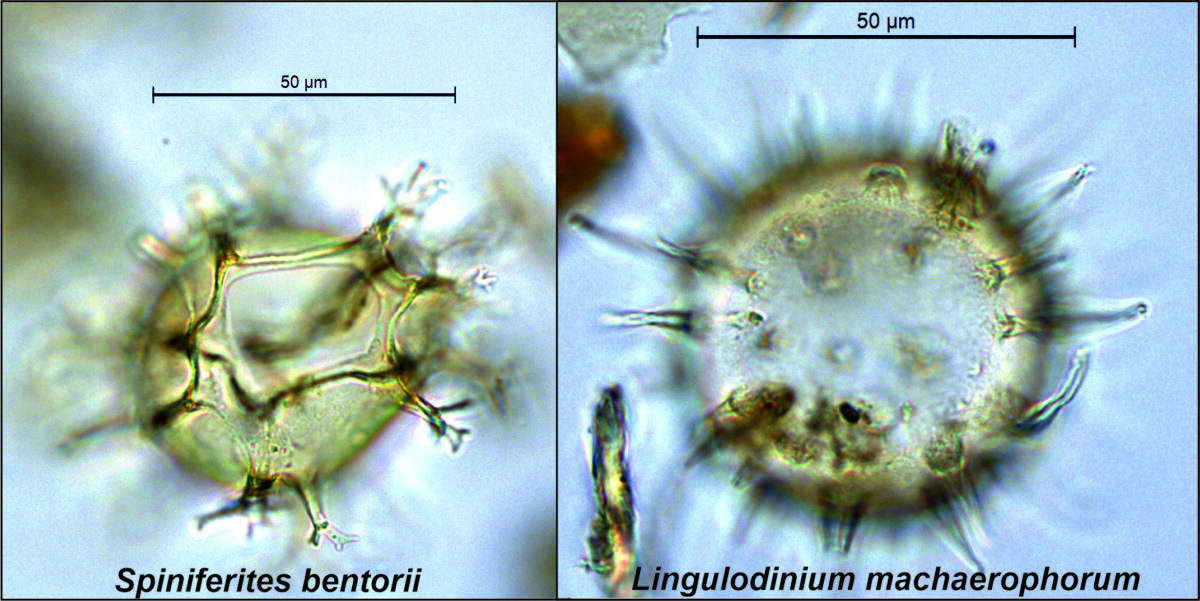PACTE

Context:
“PAst to Current land-sea Continuum: socio-ecosystem Trajectories derived from a regional pilot site” is an interdisciplinary study of the macro-tidal estuarine environment that aims to reconstruct the trajectory of the socio-ecosystem of the Brest bay.
PACTE is now one of the flagship projects of ISblue. It joins the other Flagship projects and is particularly relevant to theme 3 “Sustainability of coastal systems” and theme 5 “Long-term observation systems for ocean knowledge”.
The Bay of Brest is a coastal ecosystem that has been exposed to strong anthropogenic pressures over the last decades, especially after World War II. Using sediment cores collected in the bay, PACTE aims to reconstruct past environmental changes at a high temporal resolution.

The PACTE project:
An interdisciplinary project:

As much by the studied environment as by the decompartmentalized aspect of its axes of study, the PACTE project is placed as a complex system requiring interdisciplinary studies and the crossing of notions and concepts of various disciplinary fields
On a local scale and with a land-sea approch:

Local scale observation is essential to decipher “climate-ecology-anthropy” interactions and establish robust correlations between driving forces and environmental changes through time.
The study site is approached as a land-sea continuum and from a long-term perspective, at least over the last two centuries.
The main objective is then to reconstitute the first chronosystemic frieze of evolution of the socio-ecosystem of the Brest bay, and to highlight and model the magnitude of the imbalances with which the Brest bay is confronted when it is exposed to climatic oscillations and land use practices by mankind.
Problematic issues:
To fulfill this objective, the PACTE project focuses on three main issues:
- Can interannual variability resulting from natural climatic oscillations be recorded with the paleoreconstructions of the Brest bay ?
- Do regional environmental changes of anthropogenic origin, and their associated effects, represent breaks in the long-term functioning of ecosystems in the Brest bay ?
- Can we use historical instrumental data to build and validate a model of the land-sea continuum and confront it with the paleoreconstruction of the Brest bay in the past?
Development:
The PACTE project aims at answering these scientific questions by deploying an integrated study strategy including different aspects:
- Sedimentological, geochemical, paleoecological and paleogenetic feedback from estuarine sedimentary archives.
- Analysis of historical records of use and occupation of watersheds (agriculture, industrial activities), maritime activities (fishing, aquaculture) and major climatic events (storms, extreme temperatures, floods), as well as the instrumental monitoring of river and coastal hydrosystems
- Numerical modeling of the physico-biogeochemical trajectory of estuaries within the land-sea continuum (flow, water temperature, concentration, nutrient ratios and fluxes, oxygenation rate, phytoplankton biomass…) from the coupling of fluvial and estuarine/marine models
In this way, the project combines several techniques :

- Fossilized marine bio-indicators and biomolecular tools will be used to analyze past changes in biological communities. In parallel, changes in the harbor landscape will be studied using sedimentological analyses and pollen tracers.
- The sources and dispersion of historical pollution (occasional or chronic) will be studied using heavy metals and lead isotopes.

- In addition, a model of the land-sea continuum will be developed and validated against current environmental data before being applied to the pre-World War II period.
The model-data intercomparison will make it possible to establish and discuss robust causal relationships between the different eco-socio compartments established thanks to the paleoreconstructions, and to simulate, as precisely as possible, past to present trajectories, allowing then to consider future trajectories and scenarios.
Organization:
The PACTE project is structured around four working groups or Work Package (WP) :
- Work Package 1: “Project coordination” concerns the general coordination of the project as well as the communication around it.
Coord : A. Penaud (Geo-Ocean, IUEM)
- Work Package 2 “Geomorphological and landscape changes” package focuses on the main changes in landforms and landscapes (vegetation, geomorphology, sediment flows) influenced by climate (precipitation, storms, floods) and human activities during the last centuries.
Coord : J. Goslin (Geo-Ocean, Ifremer) and C. Lambert (LEMAR, CNRS).
- Work Package 3 : “Shifts in biological communities” focuses on the evolution of species and biological communities over time in response to changes in their physical and biological environment. In particular, it asks whether variations in protist communities coincide with hydrological disturbances in the Bay of Brest.
Coord : R. Siano (DYNECO, Ifremer) and J. Sutton (LEMAR, UBO)
- Work Package 4 : “Modelled-data comparison” compares modelled data both for the historical aspect using the HistoRade project, but also on the land/sea continuum aspect. It seeks to identify what is the socio-ecosystemic trajectory, or the propagation of impacts along the land-sea continuum, in response to climate variability and direct anthropization.
Coord : Y-M. Paulet (LEMAR, UBO) and M. Raimonet (LEMAR, CNRS)
Collaborations:
- ISblue units : Geo-Ocean, LEMAR, LETG, DYNECO-Pelagos
- Nationals units : CRBC, SEDISOR, LMBA, Ifremer, EPOC – Bordeaux
- Internationals units : Université du Nevada, projet TREC
- Partners : Shoreline Contract (BMO, EPAGA Aulne, SB Elorn)
Contact:
Mail: Aurélie Penaud
 Attention, vous utilisez un navigateur peu sûr !
Attention, vous utilisez un navigateur peu sûr !